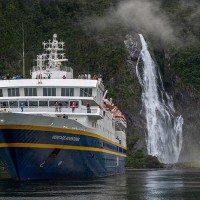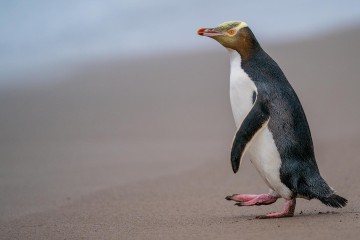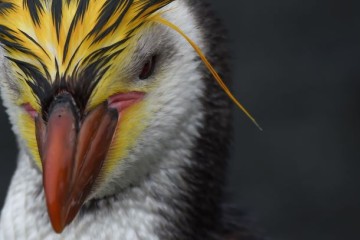Sub Antarctic Islands: Galapagos of the South
Tour Overview
Join us on this 12 day expedition cruise from New Zealand into the remote Southern Ocean, where we visit the Sub Antarctic Islands of New Zealand and Australia: The Snares, Macquarie Island, Campbell Island and Auckland Islands.
You will travel with crew that are experienced in the regions on the ice-strengthened ship Heritage Adventurer. These islands offer unique climates and many endemic species...and are often known as "The Galapagos of the Southern Ocean"
The Snares is a bird lovers paradise - Snares Crested Penguins, Cape Petrel and Buller’s Albatross, Antarctic Terns, White-fronted Terns, Red-billed Gulls, Tomtits and Fernbirds. Then to the beautiful Enderby Island in the Auckland Islands, home to the iconic Southern Royal Albatross, also Northern Giant Petrel and parakeets. Witness the rare Hookers Sea Lion at one of three the breeding grounds in these islands.
For another unique opportunity we cruise to Macquarie Island, the only place in the world where you can find the Royal Penguin. This is really a must for penguin lovers, here we will also watch Kings, Gentoo and Rockhopper penguins go about their daily lives. There is still time for a couple of days to explore Campbell Island, for more great wildlife and also unique wildflowers and mega herbs!
Our 18 December 2024 departure offers guests the opportunity to join award-winning Australian travel photographer and author of ReIMAGINE: Change your Photography by Changing your Perspective Ewen Bell on one of his bespoke, small group photography workshops.
**Please note the 22nd November 2024 departure is ex Hobart, view more info here
Viva's Best Bits...
Nature lovers delight - opportunity to see endemic flora and fauna...including lots of penguins...species include King, Royal, Rockhopper, Gentoo & Snares penguins!
"If you like wild, rarely explored and off the beaten track, then this adventure is for you! A rare opportunity to visit The Snares, Macquarie, Campbell and Auckland Islands" Tara, Team Viva
Bird lovers! Wandering Albatross, Royal Albatross, Black-browed Albatross, Light-mantled Sooty Albatross, Salvin’s Albatross, Grey-headed Albatross....and more


